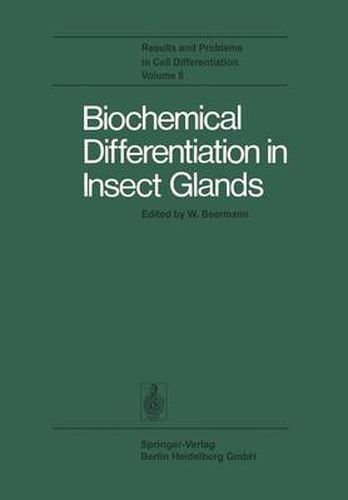Readings Newsletter
Become a Readings Member to make your shopping experience even easier.
Sign in or sign up for free!
You’re not far away from qualifying for FREE standard shipping within Australia
You’ve qualified for FREE standard shipping within Australia
The cart is loading…






This title is printed to order. This book may have been self-published. If so, we cannot guarantee the quality of the content. In the main most books will have gone through the editing process however some may not. We therefore suggest that you be aware of this before ordering this book. If in doubt check either the author or publisher’s details as we are unable to accept any returns unless they are faulty. Please contact us if you have any questions.
The majority of studies devoted to animal development traditionally start out from questions of morphogenesis. Of course, visible differentiation, as well as the events leading to it, should ultimately become describable in molecular terms. Nevertheless, even simple morphogenetic processes may have a complex biochemical basis which makes it difficult to recognize the key functions involved. This difficulty obviously does not exist in the case of glands, i. e. , organs and tissues primarily concerned with, and characterized by, the nature of their products, i. e. , one, or a few secretory proteins synthesized in huge quantities. In these systems, when we observe differences between different portions of a gland, or when switches of the synthetic activity occur during development, there is no question as to what we have to look for: we are directly faced with the fact of differential protein synthesis and the problem of its control. Insect glands, in addition, share other significant properties, i. e. , the absence of cell division during growth and, concomitantly, the formation of giant cells with polyploid or polytene nuclei. This unique set of peculiarities can be fully exploited only if one compares various representative systems, everyone of which, when considered by itself, might appear too exotic to invite generalization. In the present volume, the editors have endeavored to bring together contributionscoveringselected insect glands from various points of view,including the developmental, molecular genetic and cytogenetic aspects.
$9.00 standard shipping within Australia
FREE standard shipping within Australia for orders over $100.00
Express & International shipping calculated at checkout
This title is printed to order. This book may have been self-published. If so, we cannot guarantee the quality of the content. In the main most books will have gone through the editing process however some may not. We therefore suggest that you be aware of this before ordering this book. If in doubt check either the author or publisher’s details as we are unable to accept any returns unless they are faulty. Please contact us if you have any questions.
The majority of studies devoted to animal development traditionally start out from questions of morphogenesis. Of course, visible differentiation, as well as the events leading to it, should ultimately become describable in molecular terms. Nevertheless, even simple morphogenetic processes may have a complex biochemical basis which makes it difficult to recognize the key functions involved. This difficulty obviously does not exist in the case of glands, i. e. , organs and tissues primarily concerned with, and characterized by, the nature of their products, i. e. , one, or a few secretory proteins synthesized in huge quantities. In these systems, when we observe differences between different portions of a gland, or when switches of the synthetic activity occur during development, there is no question as to what we have to look for: we are directly faced with the fact of differential protein synthesis and the problem of its control. Insect glands, in addition, share other significant properties, i. e. , the absence of cell division during growth and, concomitantly, the formation of giant cells with polyploid or polytene nuclei. This unique set of peculiarities can be fully exploited only if one compares various representative systems, everyone of which, when considered by itself, might appear too exotic to invite generalization. In the present volume, the editors have endeavored to bring together contributionscoveringselected insect glands from various points of view,including the developmental, molecular genetic and cytogenetic aspects.